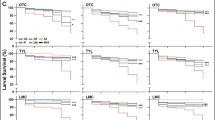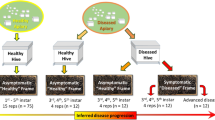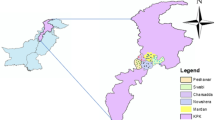Abstract
THE cause of European foul brood was originally thought to be Bacillus alvei 1 or a mixture of B. alvei and Streptococcus apis 2. The causative organism was later named and described by White3 as Bacillus pluton, a lanceolate Gram-positive bacterium. This organism is the first of several which have been found to appear in diseased larvæ. However, White and others failed to culture B. pluton in vitro and it was afterwards considered to be a dissociant form of Bacillus alvei 4, of Bacterium eurydice 5, or of both6. Others7,8 have maintained that B. pluton is a separate organism. It has been pointed out that Streptococcus pluton would be a more suitable designation than Bacillus pluton both on morphological grounds and in the absence of evidence that it forms spores. For these reasons and those given below the organism will be referred to as Streptococcus pluton.
This is a preview of subscription content, access via your institution
Access options
Subscribe to this journal
Receive 51 print issues and online access
$199.00 per year
only $3.90 per issue
Buy this article
- Purchase on SpringerLink
- Instant access to full article PDF
Prices may be subject to local taxes which are calculated during checkout
Similar content being viewed by others
References
Cheshire, F. R., and Cheyne, W. W., J. Roy. Micro. Soc., 5, 581 (1885).
Maassen, A., Arb. Biol. Abt. (Anst.-Reichsanst.) Berl., 6, 53 (1908).
White, G. F., Bull. U.S. Bur.Ent., No. 157 (1912).
Lochhead, A. G., Sci. Agric., 9, 80 (1928).
Burri, R., Beih. Schweiz. Bienenztg., 1, 209 (1943).
Burnside, C. E., J. Econ. Ent., 27, 656 (1934).
Tarr, H. L. A., Ann. App. Biol., 25, 815 (1938).
Gubler, H. U., Schweiz. Z. Allg. Path., 17, 507 (1954).
Rep. Rothamsted Exp. Sta., 136. (1954).
Author information
Authors and Affiliations
Rights and permissions
About this article
Cite this article
BAILEY, L. Ætiology of European Foul Brood; a Disease of the Larval Honey-bee. Nature 178, 1130 (1956). https://doi.org/10.1038/1781130a0
Issue date:
DOI: https://doi.org/10.1038/1781130a0
This article is cited by
-
Changes in chemical cues of Melissococcus plutonius infected honey bee larvae
Chemoecology (2021)
-
Pan-Himalayan High Altitude Endemic Cliff Bee, Apis laborisa Smith (Hymenoptera: Apidae): A Review
Proceedings of the Zoological Society (2019)
-
The Curious Case of Achromobacter eurydice, a Gram-Variable Pleomorphic Bacterium Associated with European Foulbrood Disease in Honeybees
Microbial Ecology (2018)
-
Preliminary observations on possible pathogen spill-over from Apis mellifera to Apis cerana
Apidologie (2015)
-
Molecular epidemiology and population structure of the honey bee brood pathogen Melissococcus plutonius
The ISME Journal (2014)



